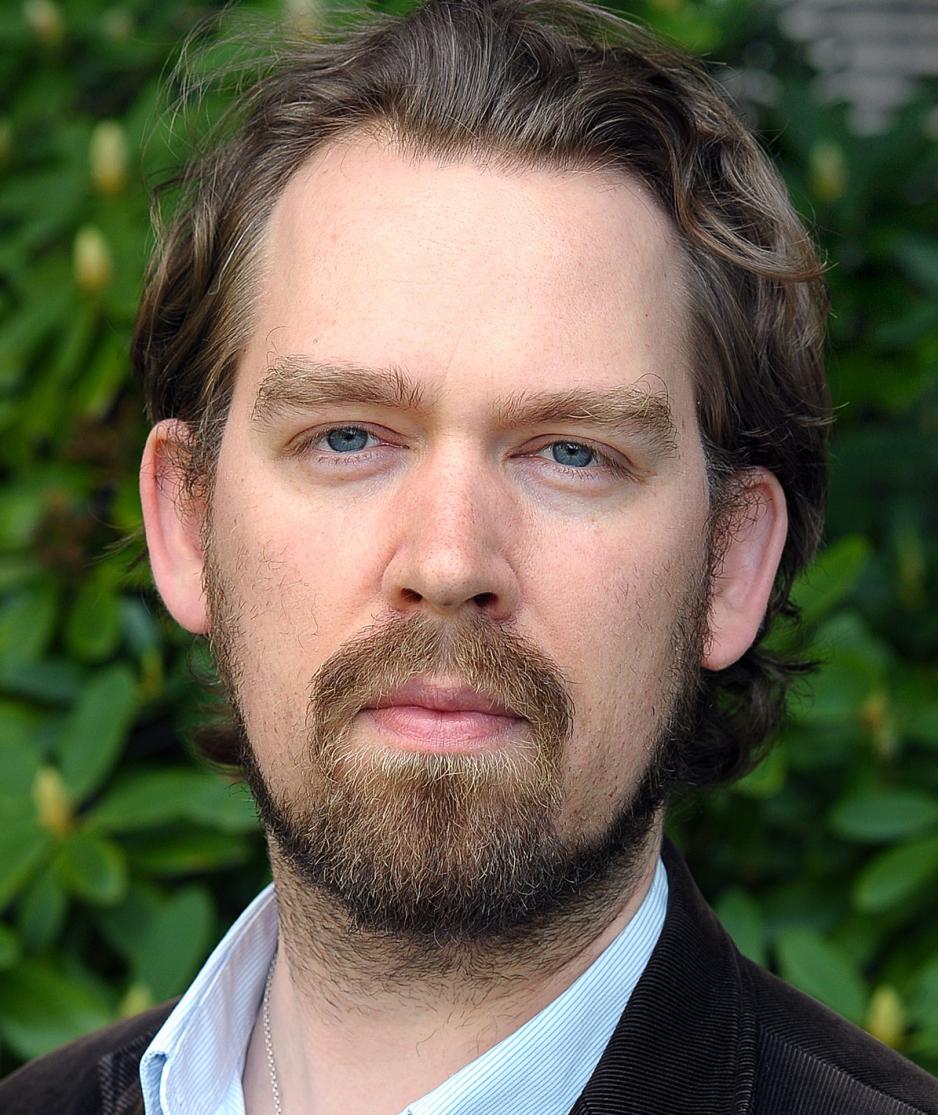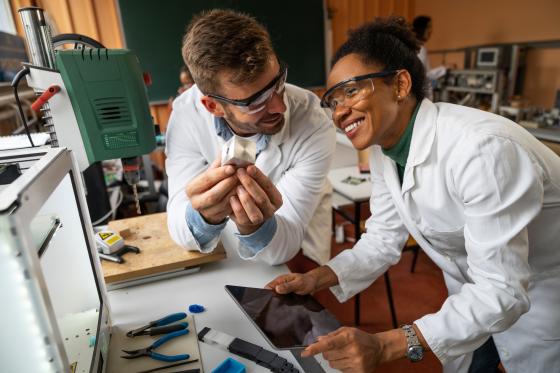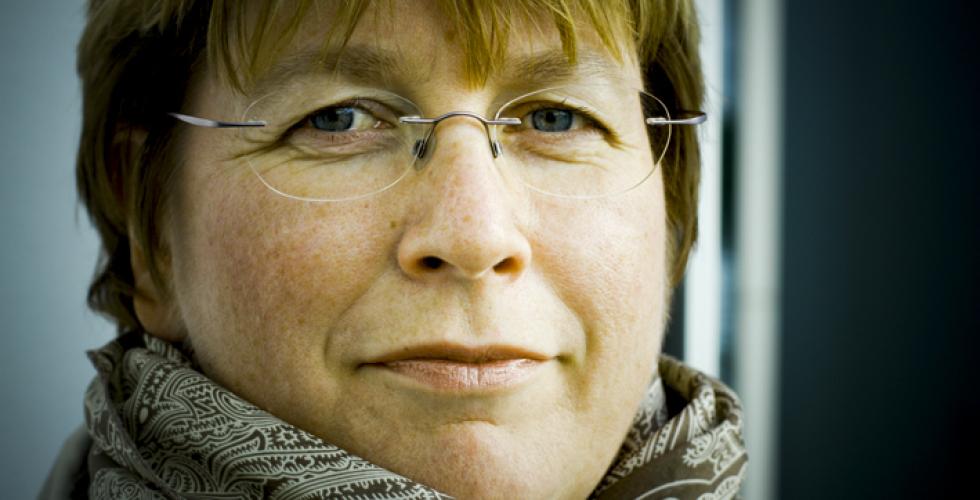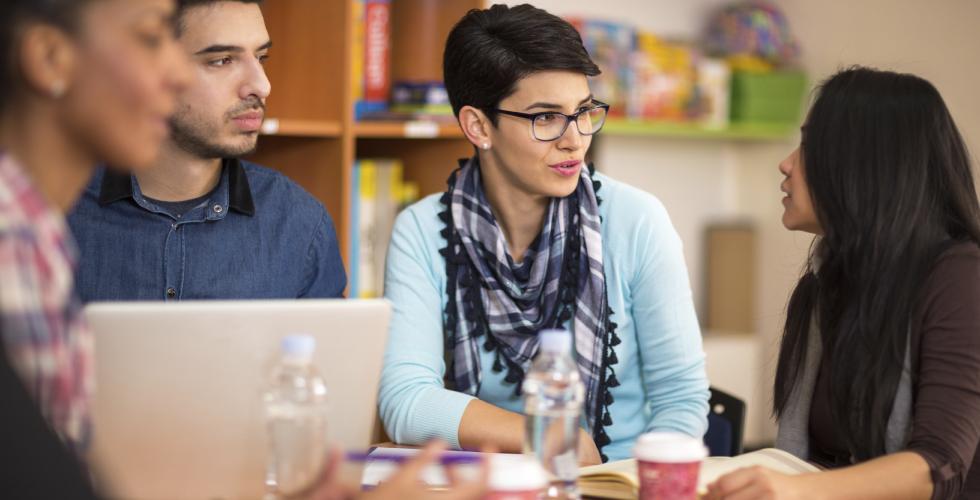Diversity report: University employees miss a sense of belonging
The authors of a new report suggest that research institutions must take more responsibility for building an inclusive work community.
“Being part of a collegial community is a real miss,” says Beret Bråten, Associate Professor at the Centre for Gender Research (STK), who has written the report with Maja Feng Mikalsen.
An inadequate sense of inclusion in the workplace is a clear sign of the diversity challenges identified in the report «Diversity and inclusion at the University of Oslo». (More about the report in the fact box.)
A great many of them miss what one respondent calls «buddy colleagues».
"I was surprised, not by the fact that this need was out there, but by its intensity,” says Bråten.
“It is particularly evident among international recruits, but also among employees born in Norway, although it’s not as big a problem for them. People who were born and grew up in Norway generally know some people, but those who come here to work from another country know no one. They are plunged into a new country, a new life, a system they are unfamiliar with, and experience an acute sense of loss.”
Long periods of isolation during the pandemic undoubtedly exacerbated the situation, but Bråten points out that a 2016 study on diversity in Norwegian academia, written on assignment for the Committee for Gender Balance and Diversity in Research (the KIF Committee) («Being a foreigner is no advantage»), made the same finding.
“Everyone we interviewed broached this, often at their own initiative, as our questions were more geared towards differential treatment in recruitment processes. Collegial community doesn’t really have that much to do with differential treatment. It has to do with there being too little focus on the fact that academics can’t just sit and read, analyse or work in their laboratories alone, they are people with human needs."
Read the news article: Immigrants want to be included, but aren’t

Institutional responsibility
The researchers point out in the report that research institutions are responsible for taking steps to ensure an inclusive work and collegial community. However, the respondents typically perceive this as their own responsibility. Norwegians and international recruits alike blame themselves for not trying harder.
"But what can the institution do about it? You can’t force people to be friends?"
“No you can’t, but there’s still a lot that can be done at the organisational level,” says Bråten.
“A system can be created whereby international employees don’t have to spend half their time at work organising practical stuff after they take up a position. And the institution can be made responsible for finding colleagues who can help newcomers to settle in at the institution and invite them to join their social networks."
“This is important for keeping people in Norway over time,” she says.
Action plans reflect changes in society
On top of the questionnaires, the researchers have gone through all the equality action plans at UiO, since the first one was written in 1989. The analysis reveals that the objectives of equality and diversity goals at the institution have changed over the years.
Work was being carried out on equality before the introduction of action plans. In the mid-1970s, UiO established an equality council that was tasked with proposing measures to promote gender equality.
“This was primarily considered important because women's lives were not represented in research and teaching. In other words, research and teaching were based on only half of the population,” says Bråten.
It was concluded that women had to be recruited to obtain their perspectives and knowledge of women’s living conditions and life stories.
“This does not represent an objective understanding of science, but a way of thinking about science where significance is given to who you are. So there’s a double perspective here: Both a knowledge perspective and a representation perspective, where the latter builds on the former,” she says.
However, the knowledge perspective was gradually left out of the action plans over the early 2000s, leaving us with representation, expressed as the goal of gender balance.
“The goal of gender balance became the main focus, which gradually became a rather fragile construct because there was no discussion of why it was important. Gender balance became a goal in itself.”
See an overview of action plans at Norwegian higher education institutions
Comeback for knowledge diversity
Equality work has more recently come to encompass diversity, which makes implementing simple representation goals difficult.
"How many employees from a minority background does it mean you need? What percentage of staff should have a disability? You can’t operate like that. So we now see that, implicitly, the goal of knowledge diversity is making a comeback in the most recent action plans,” says Bråten.
Because, if we can’t use percentages as a basis for management, we need other parameters.
“The most recent plans describe greater diversity as being important, not just because different types of people are entitled to be here, but also because it will make what we do more accessible and credible, more connected to the world at large,” she illustrates.
The most important proposal on the list is therefore that UiO should discuss what they want to achieve with the equality and diversity work, and why it is important.
"That kind of proposal will probably take many by surprise?"
“Yes, I think it will. The goals kind of got lost along the way. The management by objectives that takes place at universities and university colleges in Norway neglects all goals that don’t relate to efficiency and quality, quality here meaning ‘excellence’ and not diversity of knowledge. We really need to have a discussion about that,” says Bråten.
“What do we want diversity to achieve?”
The report quotes Tony Sandset, researcher at UiO’s Centre for Sustainable Healthcare Education, who, in a Khrono article, called for thorough reflection on what we mean by diversity, to ensure it is more than just a buzzword.

“As a member of the UiO staff, I would welcome an institutional debate on what we want diversity to achieve,” says Aike P. Rots.
He is an Associate Professor at the Department of Culture Studies and Oriental Languages, UiO, and member of the board of the Young Academy of Norway (AYF). Diversity is a recurring topic of discussion at the Faculty of Humanities, where he works.
“What I always wonder is: What specific measures does it generate? Talking about diversity and saying it’s important is easy, but what are its consequences for appointment processes for example?".
“This is something that AYF, as an organisation, is concerned with. When we appoint new members, we try to build diversity as regards gender, field, ethnicity and geography,” says Rots.
Language confusion
Over the years, AYF has worked on different types of diversity issues, and produced reports on issues such as internationalisation, discrimination and sexual harassment. At the moment, a working group is working on language policy in the higher education sector, which will culminate in specific advice. This is also one of the major topics explored in the diversity report.
“What services should be offered to foreign researchers who come to Norway to work? We see that practices vary, not just between institutions, but also within the same institution,” says Rots.
The employment contracts, written in English, for employees in permanent positions at UiO generally state that the employee must learn Norwegian within two or three years, to a level that enables them to carry out the tasks associated with the position in Norwegian. Including teaching. But how this is achieved in practice is up to the individual unit.
“AYF believes this should not be left up to the individual unit. Most international recruits are happy to learn Norwegian, but it takes time and they must fit it in with teaching, carrying out research and their private life. The institution must enable them to learn Norwegian during working hours,” says Rots.
In the diversity report, the researchers recommend that UiO establish a clear language policy that applies to the entire institution, with clear advice on follow-up. Current language practice is yet another example of what should ideally be an institutional responsibility, but that is, in practice, individualised,” Beret Bråten claims.
“What happens, for example, when two years have passed and the individual is still unable to teach in Norwegian? Some informants said that they didn’t ask because no one knows what would actually happen, and no one else asked either. Again, this was left up to the individual to find out,” says Bråten.
More search committees
The researchers believe broader reflection is needed on diversity, because, for example, there are clear differences between gender and diversity when it comes to recruitment processes. Today, you can’t get away with recommending applicants who are all of the same gender.
“There is a clear expectation in the system that women are as qualified as men, it’s just a matter of finding and motivating the women who are qualified,” says Bråten.
When it comes to other groups, like immigrants (not including international recruits) or people with a disability, the expectations are the very opposite: Representatives of such groups are not expected to make it in the competition, and that recruiting them will thus entail “radical affirmative action”.
“And things are not going to work out with that kind of approach. Some people expect that certain types of minority backgrounds will make it difficult to compete on the same terms. And the terms in academia are extremely exclusionary to start with. But there are qualified candidates in every minority group."
The report therefore recommends that UiO start using search committees for other grounds than gender alone, to avoid ending up only employing the same kind of super-productive international researchers who all have the same background.
“Being slightly less productive for a period of time doesn’t mean you aren’t qualified. I think that being required to maintain productivity through all life’s phases is one of the biggest challenges to diversity in academia,” says Bråten.
Lots to work on
The report has been commissioned by UiO to provide a better knowledge base for following up the university’s current action plan for diversity, equality and inclusion.
“This assignment is good because it shows that they want to look at this in more depth in order to map the challenges. We have got the ball rolling but there’s still plenty to investigate.”
The researchers thought that employing a broad approach in the questionnaire would capture all the grounds set out in the action plan; gender, ethnicity, disability, gender identity, sexual orientation, socio-economic background, age and religion. However, this turned out to be too optimistic.
“One clear experience from this work is that this was not actually possible,” says Bråten.
“What you manage to grasp in a general survey is issues linked to gender and whether someone was born in Norway or another country. And primarily questions that apply to international researchers, of whom there are many."
However, it was not possible to collect meaningful data about other types of diversity, such as disability, social background or sexual orientation.
"Maybe we would have been able to do so with a response rate of 70 per cent. But as things stand, specialised questionnaires would have to be developed to find out more about these groups. You have to set out to find them, and the surveys must initially be qualitative,” says Bråten, who believes UiO should definitely carry out such targeted surveys.
Translated by Allegro Language Services.
The report «Diversity and inclusion at the University of Oslo» (in Norwegian with English summary) was commissioned by the University of Oslo to provide a better knowledge base for following up the university’s current action plan for diversity, equality and inclusion. The plan was adopted in May 2021. The equality and diversity policy at UiO is based on the institution’s strategy document, Strategy 2030.
The researchers distributed questionnaires to all employees, and received answers from 22 per cent (1,646 people). Of this figure, 59 per cent were women and 39 percent men.
They also carried out qualitative interviews with 26 members of staff, in both scientific and technical/administrative positions.
The most important findings:
- Employees in all groups experience inadequate peer inclusion
- Gender balance and diversity are dealt with differently in appointment processes
- Language policy is, in practice, left up to the individual units and the individual employees
- The incentive system may be detrimental to academic diversity
The following are some of the proposals made in the report:
- Discuss what the goals of equality and diversity should be
- Establish search committees for other grounds than gender alone
- Establish a clear language policy and practice throughout UiO
- Confirm that an inclusive work and collegial community is the responsibility of the institution





